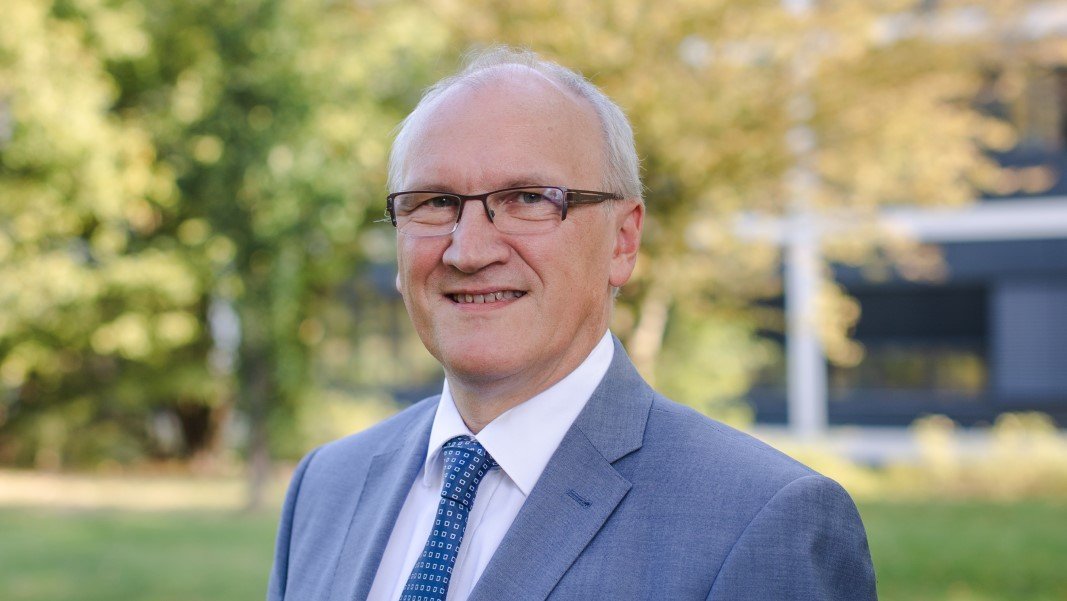Brings solutions to the surface.
Lasers present no threat to the grinding sector

GrindingHub providing expertise at ISF Grinding Seminar
The early bird gets the worm. This certainly applies to Prof. Dirk Biermann, Head of the Institute of Machining Technology (ISF) at the Technical University of Dortmund. Although the new GrindingHub trade fair – organised by Messe Stuttgart, Swissmem and VDW – is not scheduled to take place until May 2022, the well-known grinding expert and SSPT (German Academic Association for Production Technology) scientist was quick to support the event. The leading ISF figure agreed to give an in-depth interview.
Professor Biermann, when the GrindingHub finally opens its doors in Stuttgart, the ISF will be celebrating its 50th anniversary in Dortmund. From your point of view as a former engine developer and current head of the Institute, how has grinding changed during this time?
Dirk Biermann: Everything used to be quite rudimentary. In terms of precision and surface quality, however, we’ve now advanced into the sub-µm realm which was unthinkable back then This has not been at the expense of productivity, though, which has increased at the same time.
New processes such as laser polishing are on the rise. What are their strong points? Where is grinding still in demand?
Dirk Biermann: I see laser polishing primarily as a supplementary process. This relatively young technology has already conquered certain niches such as plastics and medical technology. Some interesting solutions now exist, but laser polishing is not appropriate for all grinding and finishing applications by any means. What’s more, it’s still relatively expensive in terms of initial investment.
What challenges do new drive forms such as electromobility pose for grinding?
Dirk Biermann: This trend is increasing the demands on grinding. Until now, the combustion engine masked the noises of bearings, gears or gearboxes, for example. What is particularly challenging, however, is the machining of housings. Their structure means that they vibrate easily in integrated drive systems and in combination with the lightweight solutions used in electric vehicles. Special solutions are therefore needed to make sure the specified tight tolerances are not exceeded.
You mention audible or perceptible vibration in motor vehicles which is attributable above all to the new, lightweight materials. How is grinding technology reacting to new composite materials, for example?
Dirk Biermann: I see great opportunities in the grinding of carbon fibre plastics, or CFRPs for short. Many users still machine CFRPs using tools with geometrically defined cutting edges. But this results in high wear levels during drilling and milling. The Institute of Machining Technology has developed an alternative diamond grinding process which is significantly more economical. I’m expecting to see interest in this grow as the number of CFRP processing operations rises.
3D printing. Do we need new grinding technologies for the machining of additively manufactured components?
Dirk Biermann: Customised and adapted solutions are what are needed here. These new processes are ideal for achieving superior final quality levels. An international network is researching new processes for additively manufactured parts in the EU ‘Ad-Proc-Add’ (Advanced Processing of Additively Manufactured Parts) project. One of the main issues in the production chain of additively manufactured steel materials is the interaction with metal-cutting finishing. The ISF is looking here at grinding, wet-blasting and microfinishing.
What is the current state of the art in abrasive wet blasting? You have joined forces with the Swiss company Nicolis Technology AG to advance this in the area of precision cutting edge preparation.
Dirk Biermann: We use an articulated-arm robot to hold the grinding tools. This permits the reliable and reproducible processing of sophisticated tools such as drills and end mills. This technique is now so successful that it can even be used to produce asymmetrical cutting edges on drilling and milling tools.
Cutting edge machining is generally considered one of the strengths of grinding. Is ISF working on any similar developments?
Dirk Biermann: A team led by Dr. Timo Bathe and Alexander Ott has developed the [Tool]Prep process. This is used to adapt tool cutting edges to the respective operating conditions. The two ISF scientists have started up their own business to develop, refine and market this cutting-edge preparation method. What is special about [Tool]Prep is that it offers tool grinders simple and reproducible cutting-edge preparation on their own machines. This is achieved with the aid of an exchangeable element within the arbor of a modified grinding wheel holder.
Why has the ISF set up a special unit to conduct a basic research project on the grinding of inhomogeneous mineral substrates such as reinforced concrete?
Dirk Biermann: Fluctuating process conditions are a major challenge. The natural mineral components come from different parts of Germany such as the Rhine region or the Black Forest. As for many metal-based materials, we use diamond-coated tools here, adapting the shape and arrangement of the diamond particles to the particular type of reinforced concrete.
What do you make of the trend towards additively coated grinding tools?
Dirk Biermann: This is a very interesting solution that some grinding tool manufacturers are already exploring. 3D printing offers exciting possibilities such as the printing of supply channels for the cooling lubricant.
What do you think about the new GrindingHub trade fair?
Dirk Biermann: Healthy competition is good among trade fairs. And so grinding sector researchers like me will visit both the GrindTec and the GrindingHub.





